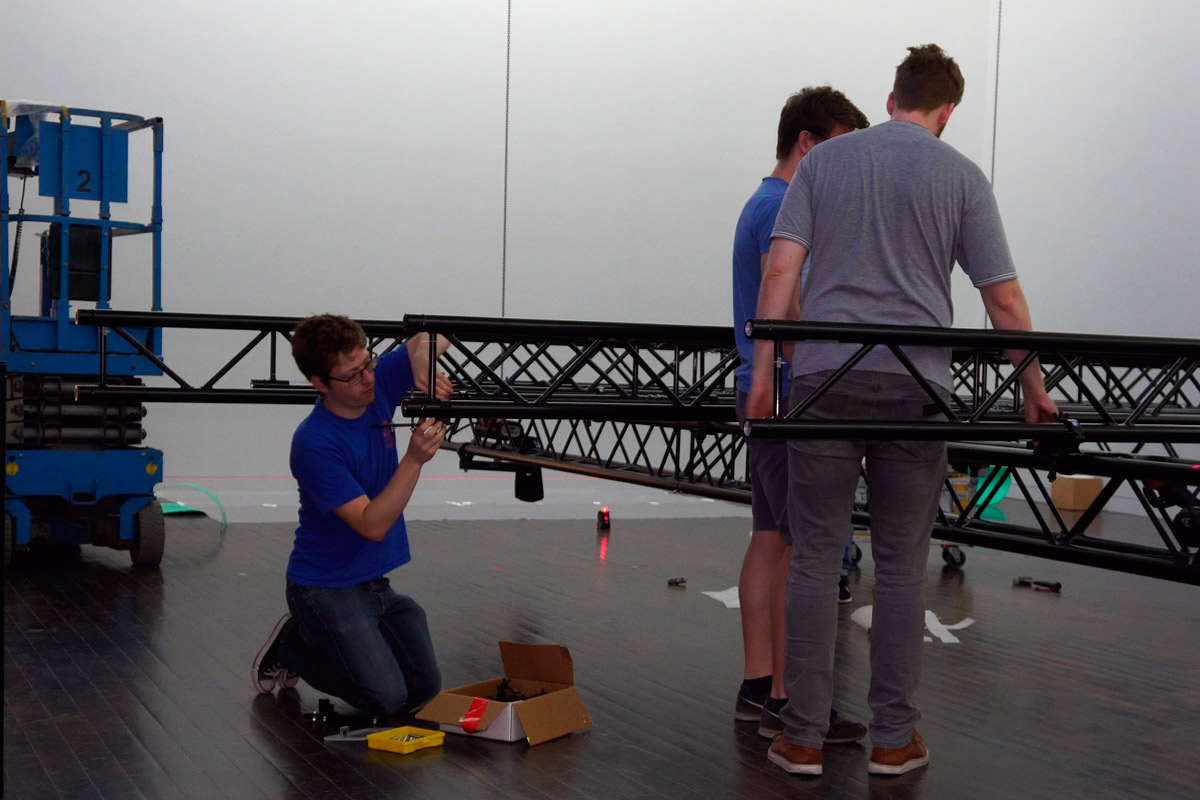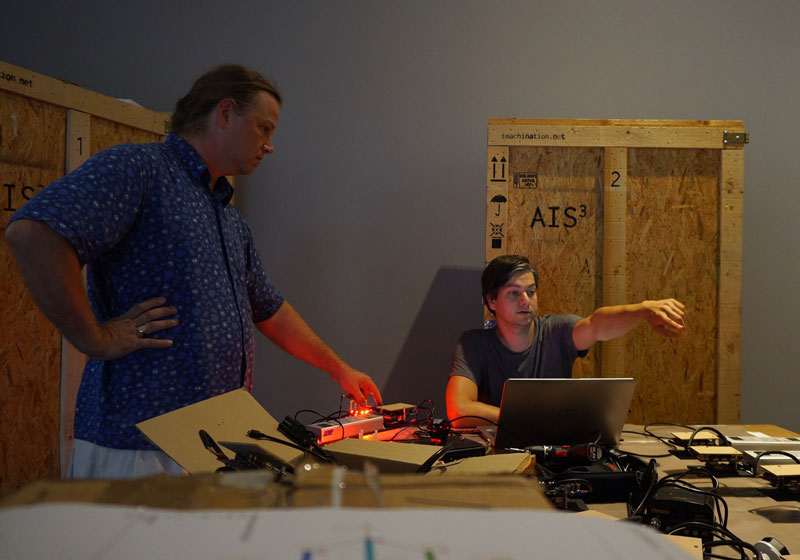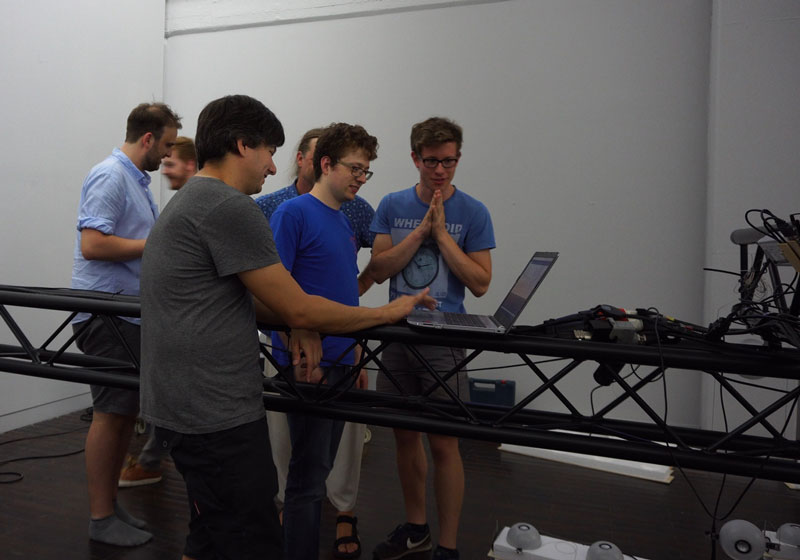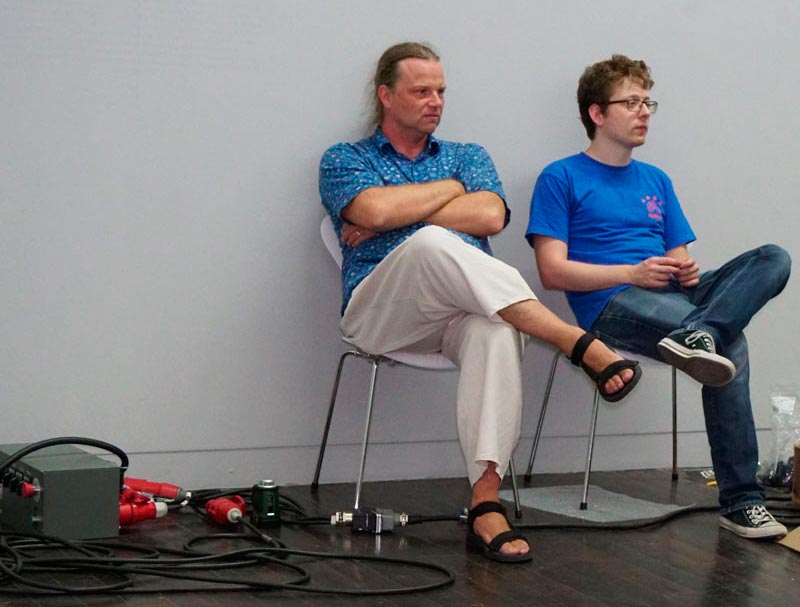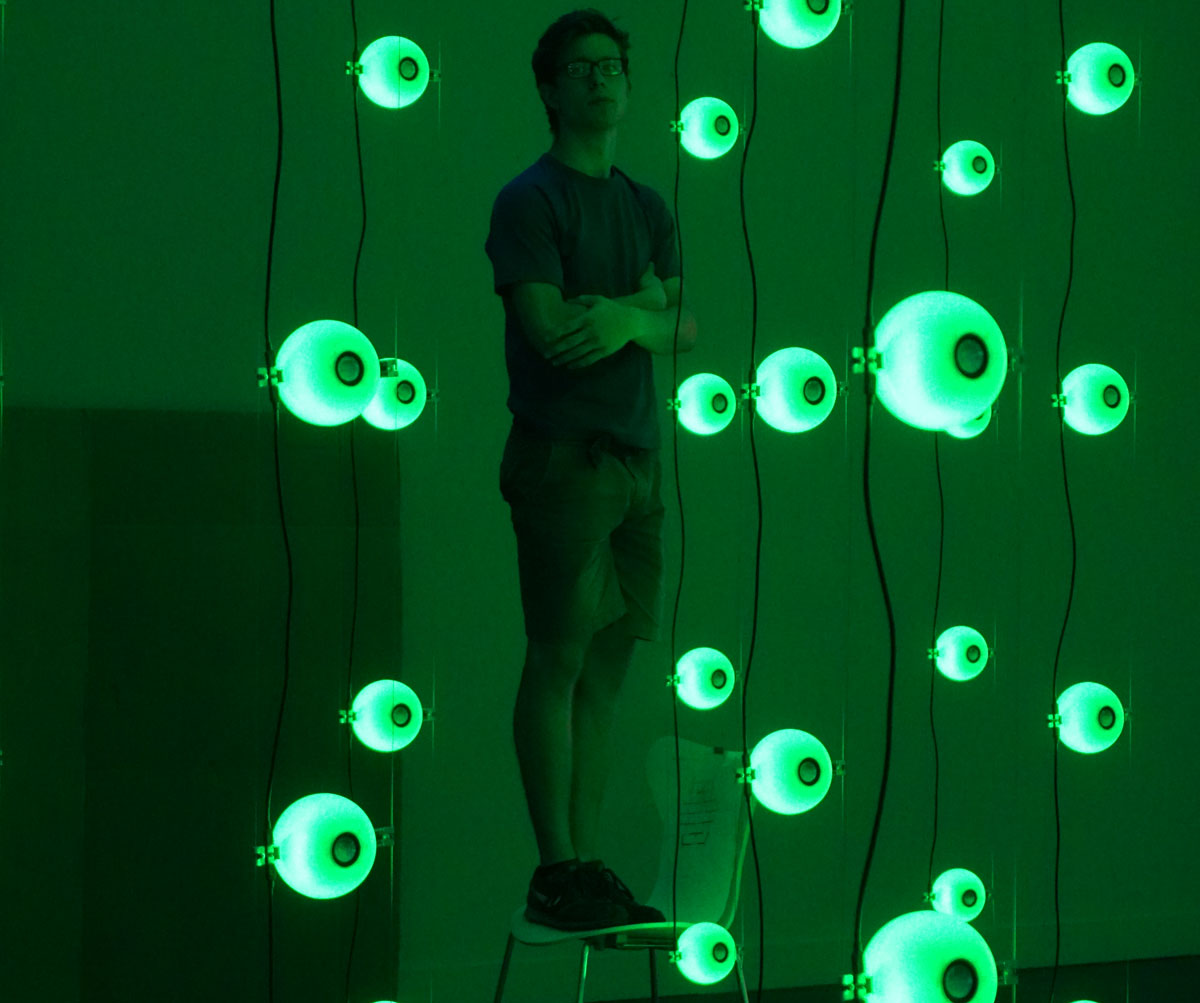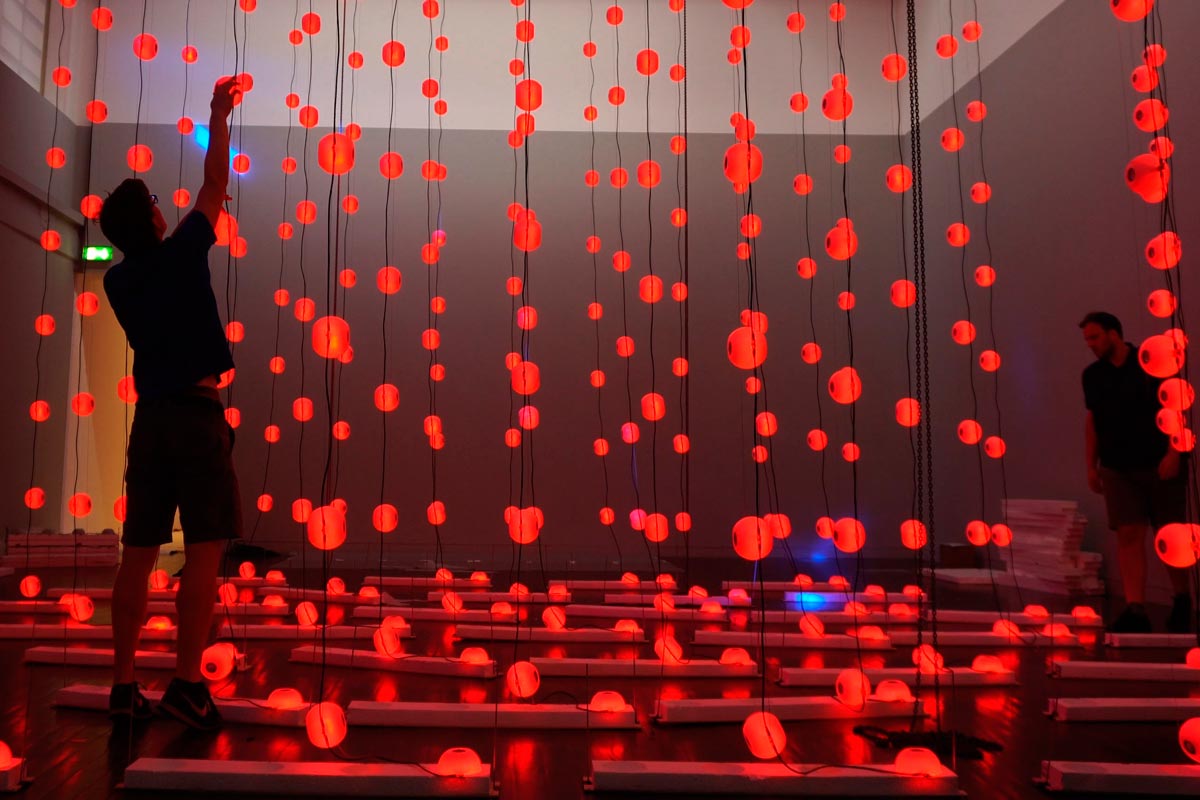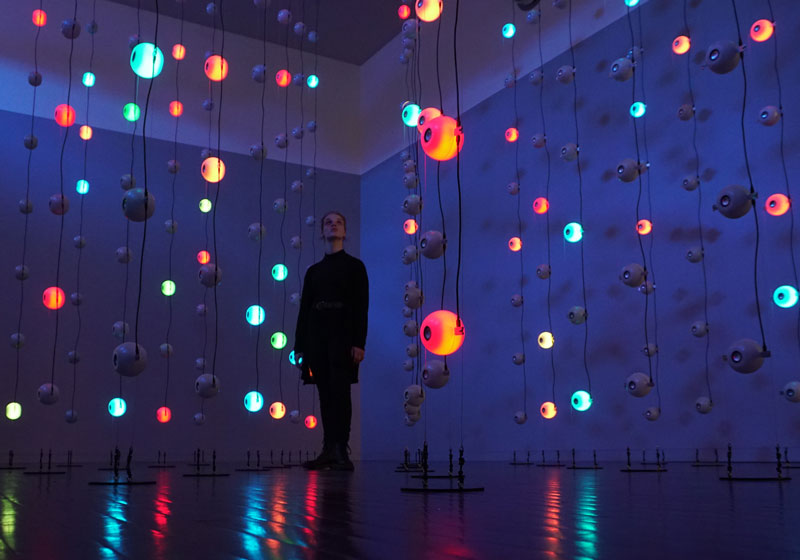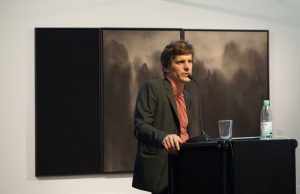
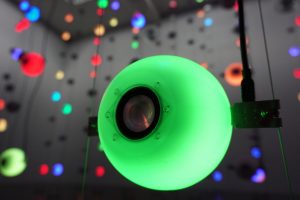
The late middle ages were the starting point for Robert Barry’s excursion into the history of acoustic immersion. According to modern reconstructions selected churches and sacral building were especially constructed at that time to establish a special liaison between space and sound. Until early modern times the church kept this monopoly on the spatialization of sound. The situation changed in the course of the 17th century when the first commercial concert hall opened its doors to the public. This sort of profanation of immersive acoustic environment was finally topped by cinema in the 20th breaking the boundaries between stage and audience. The founding moment is the creation of Walt Disney’s “Fantasia” by the end of the 1930s. The orchestra is virtualized by being recorded with up to 33 microphones. A multi-channel loudspeaker systems gives the audience the impression to sit in the middle of the orchestra. Finally the “space age of music” was initiated nine months after Neil Armstrong made his footstep on the moon: At the Expo 1970 in Osaka Karlheinz Stockhausen realized a 360 degree immersive environment positioning the audience in the centre of a spherical architecture stuffed with loudspeakers. In this acoustic space age Barry locates also [aiskju:b] as an “invitation to imagine other worlds and spaces”.
Robert Barry is an English writer and composer based in London. He has written music for film, for contemporary dance, and for the club and his book The Music of the Future was published by Repeater in 2017.
![[aiskju:b] is just an invitation to dream – Robert Barry on the “space age of music”](http://www.imachination.net/blog/wp/wp-content/uploads/2019/10/RobertBarry_TalkLuFoAachen_800px.jpg)
![[aiskju:b] Setup & Update @ Ludwig Forum für internationale Kunst in Aachen](http://www.imachination.net/blog/wp/wp-content/uploads/2019/08/Leiter_aufbaulufo_web_1200px-1200x800.jpg)
